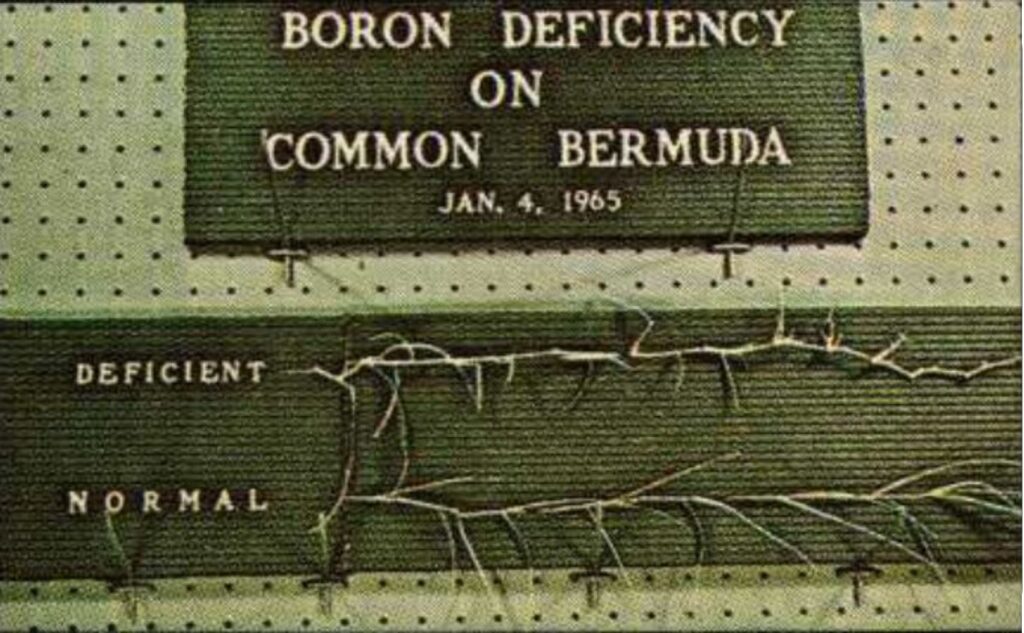The information in this article was provided by Gilba Solutions
Is your turf suffering from poor root growth or a classic witches’ broom appearance? You may assume that obviously, it must be mites! Not necessarily. There actually is another option that few people ever consider.

Often totally overlooked in turf nutrition, Boron plays a key role in just that. Boron aids in shoot and root growth by assisting in the control of hormones and the translocation of sugars around the plant. Turf that is deficient in boron will grow stunted with discoloured leaves and cracked roots. The requirement of turfgrass for boron is usually less than that of any other minor element, and is immobile in the plant, which means every time you mow, you’re physically removing it. A 1967 study (Larson and Love) found in Kentucky bluegrass, couch and bentgrass, the order of displayed deficiency was iron, manganese, zinc, molybdenum, boron and copper. Except for molybdenum, this was the typical order for the concentration of trace elements in leaf tissue.
As the plants in the accompanying coloured plate show, Boron deficiency is characterized by a stunting of the growing points, resulting in leaves are stubby with enlarged nodes and shortened intermodal distances. In effect, the plant assumes the classical witches’ broom appearance. Boron deficiencies are generally related to high rainfall areas or, equally, high rates of irrigation on freely draining rootzone, thus medium conditions are ripe for deficiency to occur.
In soils of an acid pH, Boron is more water-soluble and can therefore be leached below the root-zones of plants by rainfall or irrigation. It has also been shown that symptoms of Boron deficiency are associated with high soil pH values (alkaline conditions). Under high pH conditions, Boron is less soluble, which can lead to reduced plant uptake and consequently result in deficiency.
Recently, I have come across examples where deficiency actually exists, but the advice the client receives is along the lines of, “Boron is toxic – don’t apply it!’’. As with all “trace elements’’, the actual amount needed to correct a deficiency is very small, and I would, on this basis, strongly advocate working with a qualified Soil Scientist or similar to ensure that overapplication does not lead to toxicity.
As is often the case with a lot of the so-called proprietary software on the market, Boron is completely overlooked as being necessary to test for. If no issues actually exist, then this may well be a sensible approach. But if your turf surface is struggling and exhibiting symptoms indicating boron deficiency, then testing may well be worthwhile.
The information in this article was provided by Gilba Solutions

